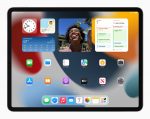So, it’s been a long time since we’ve talked about Apple products on here. With good reason too. They’ve kind of lost their lustre since Steve Jobs passed away, at least in my eyes. But low and behold, we have a new iPhone SE. A “cheap” iPhone for the unwashed masses to bathe in the glory of what The Register always referred to as the “Jesus Phone”. According to pundits across the internet, it’s the best phone ever, one that will surely put every mid-range Android device to shame. Right?
Well, no. I’ve owned both iOS and Android devices, and taking a look at this, it gives me a stark reminder of why I ditched iPhone in the first place. I think it really boils down to two schools of thought here: do you care more about raw performance, or features.
The second generation iPhone SE certainly tops the former, with a blazing fast A13 Bionic SoC, the same one found in Apple’s current flagship devices. When it comes to processing power, this is one area where Apple has put all other mobile devices to shame. It’s not even even close to being a fair fight. According to Geekbench tests, the A13 is 66% faster than the Snapdragon 865, the reigning champion in the Android world. In fact, you have to go back to the A10X in the 2017 iPad Pro to match it. Meaning Apple is currently at three years ahead of Qualcomm and Samsung in terms of performance.
So, does that matter? I mean, most phone apps don’t take advantage of the performance most SoCs offer even today. Which was basically the gist of an article I wrote a while back about why buying flagship phones is pointless. Instagram and TikTok aren’t going to benefit much from that kind of horsepower. Neither are most mobile games for that matter. Especially on a passively cooled device.
In the real world, you’re not going to see much difference between an iPhone and a slower Android device. Even after several years of ownership. My Asus Zenfone 3 still runs everything like a champ despite being a 2017 mid-range device. I can’t say the same thing about the iPhones I’ve owned. Let’s not forget that Apple does throttle performance of older handsets, ostensibly to protect the battery. Granted my last one was the 4S, but it was starting to chug like a slug in cold molasses around the same point in its life. So I guess that power doesn’t mean much when they can just take it away once they figure you need a new handset.
So what else does the SE offer besides speed. Well, that’s where the argument that this is the best-est phone ever starts to fall apart rather quickly.
Let’s take a look at what Apple’s biggest competitor Samsung is up to. The recently released Galaxy A71 comes in at the same $399 starting price as the iPhone SE 2. I’ve made a chart comparing their specs, with winners marked in green, and ties marked in yellow.

So while the iPhone definitely wins in terms of raw performance, it looses everywhere else. Particularly when it comes to display and battery life. AMOLED is going to make a big difference in terms of image quality. With brighter colours and deeper blacks than what an IPS display can pull off. Plus you get a higher dpi rating to boot despite the A71 having a significantly bigger screen.
When it comes to endurance, Apple claims comparable battery life to the iPhone 8, which according to independent tests from GSM Arena should peg it at 12.5 hours talk and 10.5 for video. Apple claims it should do 13 hours for video, so there may be a slight improvement here. But in this case, the Samsung absolutely crushes the both the 8 and SE with 17 hours for video and 30hrs talk in independent tests. Showing how much of a difference that beefy 4.5Ah battery makes.
If we’re being honest here, the iPhone far more efficient with its power, for video anyway. But sometimes bigger is better. Especially if you don’t have easy access to an outlet or wireless charge pad. Speaking of fast charging, the SE will do 18W, while the A71 will do 25W. Which isn’t a big difference. But the iPhone will charge a lot faster due to its smaller battery.

As for the cameras, well, it’s pretty much a draw here. The A71 looks better on paper, but real world tests have always supported the iPhone having the better image quality. Megapixel count doesn’t really matter a whole lot. What really matters is sensor size and image processing techniques. I think in the end they’re going to be fairly comparable. The A71’s real trick though is its decent night mode. A feature that is present in more expensive iPhones, but was removed from the SE.
When it comes to the nitpicky things, the A71 also features double the RAM and storage as the SE. While Apple is better at memory management than Android, 3GB does seem a bit paltry today when mid-range Chinesium handsets have been shipping with 4GB for over five years now. 128GB stock internal flash will also be handy for those who take video or have large music collections. Cloud and streaming have made internal storage less important than it used to be, but Apple has always charged a premium for both. Plus like all iPhones, that storage cannot be expanded. At least not without the use of an external dongle.
Speaking of dongles, the SE doesn’t include a headphone jack either. While Bluetooth audio has gotten a lot better, let’s be honest, it’s still not that great. It’s not a replacement for wired sets that a lot, dare I say most people still use. Samsung has been able to add a built in jack, so I’m not sure what Apple’s problem is. Like I said years ago, it’s just an excuse to sell more Beats and Air Pods.
Finally we come to my last, and perhaps greatest beef with the iPhone: iOS. Google trusts you to use your phone the way you want to, where Apple still keeps things locked down tighter than a nun’s drawers. As such, it’s always felt a few steps behind what Android’s doing. The only real benefits to iOS is long term software support. Which really isn’t a Google problem so much, but more on the handset makers. Though it seems like everyone’s favourite advertising giant is looking to start ramming updates through anyway regardless of what Samsung et al want.
Android just feels more functional and customizable. This might be a personal taste thing, but the limits of iOS is what pushed me to its competitors in the first place.
Overall, whether you chose the SE or an Android competitor really boils down to what you care the most about. The iPhone wins on raw performance for the price hands down, while Samsung is pushing a slower handset that’s bundled with more features a lot of people care about. Thus making it the overall better value in my opinion. The point of this article was not to prove that the SE was crap (it’s not) so much is that it’s not the Jesus Phone a lot of pundits are making it out to be. There’s plenty of mid-range Android devices that can dance toe to toe with, and still whoop, Cupertino’s butt.





